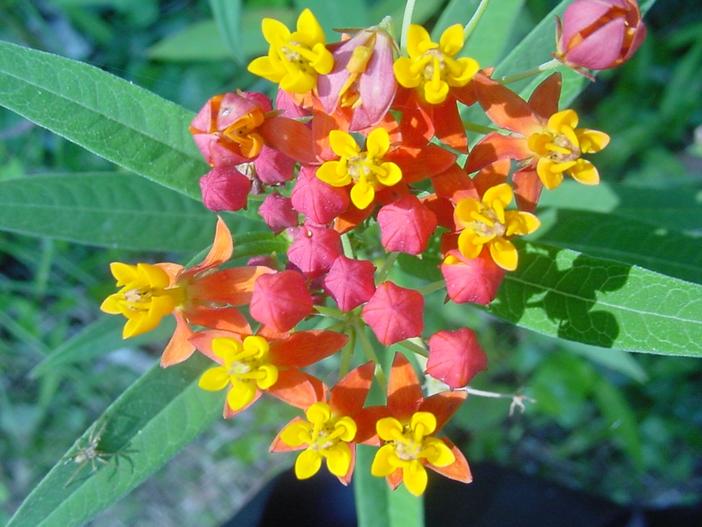Tropical Milkweed
(Asclepias curassavica)
Tropical Milkweed (Asclepias curassavica)
/
/

Marcia Stefani
CC BY 2.0
Image By:
Marcia Stefani
Recorded By:
Copyright:
CC BY 2.0
Copyright Notice:
Photo by: Marcia Stefani | License Type: CC BY 2.0 | License URL: https://creativecommons.org/licenses/by/2.0/ | Uploader: Marcia Stefani | Publisher: Flickr



























Estimated Native Range
Summary
Asclepias curassavica, commonly known as tropical milkweed, is a perennial herb native to Mexico and the American tropics. It typically inhabits open areas such as grasslands, disturbed sites, and along roadsides. The plant reaches a height of 2 to 3 feet (0.6 to 0.9 meters) and is characterized by its showy clusters of bright red and orange flowers that bloom from spring to fall. The flowers are highly attractive to butterflies and other pollinators. Tropical milkweed also features lanceolate leaves and milky sap, which contains toxic compounds that caterpillars of the monarch butterfly ingest to deter predators.
Tropical milkweed is valued for its vibrant flowers and its role as a host plant for monarch butterflies. It is commonly used in butterfly gardens, borders, and as an accent plant. In cultivation, it prefers full sun to part shade, well-drained soils, and moderate watering. While it is easy to grow and maintain, gardeners should be aware of its potential to become invasive outside its native range. It is recommended to cut back the plant in the fall to prevent overwintering monarch populations in non-native areas. Tropical milkweed can suffer from pests like aphids and spider mites, and diseases such as root rot in overly moist conditions.CC BY-SA 4.0
Tropical milkweed is valued for its vibrant flowers and its role as a host plant for monarch butterflies. It is commonly used in butterfly gardens, borders, and as an accent plant. In cultivation, it prefers full sun to part shade, well-drained soils, and moderate watering. While it is easy to grow and maintain, gardeners should be aware of its potential to become invasive outside its native range. It is recommended to cut back the plant in the fall to prevent overwintering monarch populations in non-native areas. Tropical milkweed can suffer from pests like aphids and spider mites, and diseases such as root rot in overly moist conditions.CC BY-SA 4.0
Plant Description
- Plant Type: Herb
- Height: 2-4 feet
- Width: 0.5-1 feet
- Growth Rate: Rapid
- Flower Color: Orange, Red, Yellow
- Flowering Season: Spring, Summer
- Leaf Retention: Evergreen, Semi-deciduous
Growth Requirements
- Sun: Full Sun
- Water: Medium
- Drainage: Fast, Medium
Common Uses
Bee Garden, Bird Garden, Butterfly Garden, Low Maintenance, Potted Plant, Street Planting
Natural Habitat
Open areas such as grasslands, disturbed sites, and along roadsides
Other Names
Common Names: Mexican Milkweed , Adelfilla , Burladora , Cancerina , Chilillo , Chilillo Venenoso , Cinco Llagas , Flor de muerto , Flor de tigre
Scientific Names:
GBIF Accepted Name: Asclepias curassavica L.